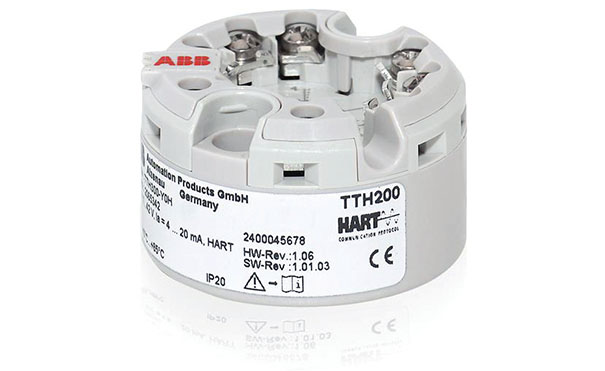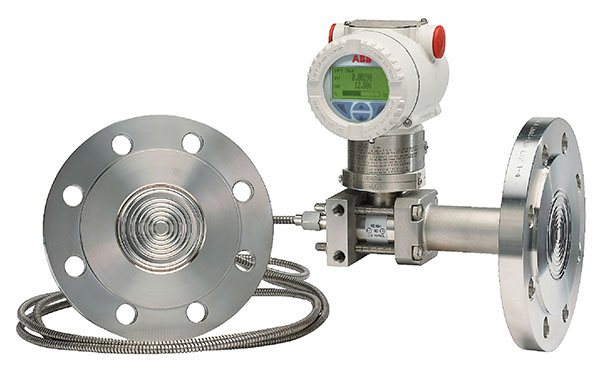Instrumentation Blog
A temperature transmitter is one of the electronic components in an industrial or laboratory thermal measurement array.
They act as the interfaces between a control system and a temperature sensor, converting analog thermal readings into scaled digital output signals with reduced background noise to enable accurate temperature monitoring with low degrees of interference. This complex system enables analysts to understand the thermal conditions of a process chamber or flow system as a value of degrees Celsius or degrees Fahrenheit in real-time.
Temperature transmitters can be manufactured as stand-alone devices that are attached to one or more temperature monitors in a process control system or integrated into a component’s connection head. The latter arrangement reduces the wiring requirements and the instrument footprint with an improved mechanical connection that is less susceptible to corrosion from process gases, vapors, or temperatures. Although the functionalities of a temperature transmitter are typically dictated by the application requirements.
Each of these component styles may be required to make signals available as an immediate digital reading and to transfer the data further down a measuring chain for additional processing. This article will explore the types, capacities, and applications of temperature transmitters in more detail:
Field-Mount & Head-Mount Temperature Transmitters
A field-mount temperature transmitter is an external component with an optional indicator and an encapsulating housing of die-cast aluminum or stainless steel. This protects the sensitive electronic components of the system from humidity, moisture, and other corrosive media.
Head-mounted temperature transmitters are integrated into the connection head of a temperature sensor with a direct connection to a thermowell via the extension tube and the process connection.
These are both connected with conventional Two-Wire technology, which uses the same wire connections for the power supply and signal outputs. With this technology, the temperature values are acquired by a measuring inset and converted into a thermal voltage, which is scaled into a load independent 4-20mA direct current (DC) signal. This signal can be immediately displayed on the digital indicator integrated into the transmitter’s housing, and transferred for further process control and analysis.
Temperature Transmitters from ABB
ABB has over 125 years’ experience in the field of temperature measurement for some of the most demanding industrial environments. Their range of temperature transmitters has been adapted for distinct application requirements, with field-mount and head-mount temperature transmitters suitable for difficult, often hazardous environments. This range includes:
- TTH200 head-mount temperature transmitter with a universal sensor input for RTD probes and thermocouples, and an accuracy of 0.1%. This integrated devices is tested to multiple compliances for explosion protection, corrosion monitoring, and extended diagnostics.
- TTF200 field-mount temperature transmitter with an optional LCD display and several configurable arrangements. It features the same outstanding accuracy of the TTH200 and is also tested to numerous specifications for industrial safety requirements.
Pressure in a contained system can be quantified as a value against atmospheric or absolute pressure, or as the differential value between the applied forces of two distinct points.
This last value is critical for a plethora of process control applications, providing insights into the ongoing efficacy of pressure vessel containers and gas flow systems. Many industries rely on differential pressure transmitters for level sensing in condensers, or to acquire quantitative data about process performance and to monitor component throughput for changes over time due to build-up of particulates and contaminants.
Differential pressure transmitters acquire the differential pressure of a closed system by obtaining the applied force at two measurement points and calculating the difference against pre-defined application parameters. This article will explore how a differential pressure transmitter works in more detail:
The Components of a Differential Pressure Transmitter
Differential pressure transmitters are comprised of a robust electronic module and two sensory diaphragms that provide the electronic reading of applied forces in a containment vessel. These arrangements are physically connected in set configurations depending upon the application requirements.
Applied pressure readings are acquired by the diaphragms, which register pressure as surface deformation and translate that value into an electronic signal. This signal is transferred to the differential pressure module, which compares the two values and expresses the pressure difference as a value of pounds per square inch (psi), bar, or kilopascals (kPa). These diaphragms are all-welded to maintain the container integrity in vacuum conditions and for wet leg applications, such as level measurement in crude oil distilleries.
Applications of Differential Pressure Transmitters
Differential pressure transmitters can be used for reaction and process monitoring in a range of industrial sectors, with high resistance to corrosive media and atmospheric moisture. The diaphragms are typically fabricated from stainless-steel and are inherently resistant to oxidisation and gas adsorption in flue pipework for example. Inconel diaphragms can be applied for improved resistance to salt water in marine hydrocarbon exploration.
The electronic module can be calibrated to perform for dry and wet leg applications, providing accurate pressure readings for materials that evaporate or condensate. Select differential pressure transmitters also feature wireless communications to enable remote monitoring of pressure readings in potentially hazardous applications.
Further applications of differential pressure transmitters include low-temperature reaction tank monitoring in the chemical sector and filtration monitoring for a range of flow systems.
Pressure Sensors from ABB
ABB is a leading developer of differential pressure transmitters for a range of industrial and research applications – from the everyday to the cutting-edge. With All-Welded diaphragms, highly automated on-board configuration, and enhanced plug and play graphical interfaces, measuring differential pressure is a safe and seamless process. Our range of differential pressure transmitters includes:
- 266DRH, equipped for remote-sealing with a base accuracy of within 0.06% and a span limit of 4 – 16,000kPa;
- 266DSH, a comprehensive differential pressure transmitter with an expanded span limit of 0.05 – 16,000kPa with update rates as rapid as 32 seconds;
- 266MRT, a top-performance differential transmitter with multisensory technology for liquid, gas, and steam flow and level measuring, plus density measuring, with a base accuracy of within 0.04%;
- 266MST, for simultaneous measurement of both differential pressure and absolute pressure with range-topping performance levels and multiple output signals for exceptional versatility.





